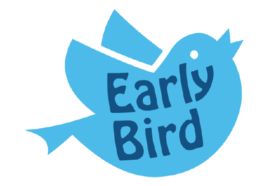Professor Dame Uta Frith delivered this Keynote lecture ‘The fear of categories – can we overcome it?’ on Friday 30 October 2020 at the ACAMH Awards. Professor Frith was the recipient of ACAMH’s President’s Medal at the virtual awards.
The ACAMH Awards aim to recognise high quality work in evidence based science, both in publication and practice, in the field of child and adolescent mental health.
Transcript
Good evening. What I’m going to talk to you about is controversial yet it is an age-old conundrum that I’ve been struggling with ever since I trained in clinical psychology in the 1960s. What is normal? What is abnormal? Or in modern language, what is neurotypical and what is neurodiverse? The answer to this is not easy because we have enormous variation within both typical and atypical populations. And yes, each individual is unique and needs to be looked at in their own right. But we can also see family resemblance between individuals. But what are we to make of today’s diagnostic categories?
For me, this question is urgent because I feel overwhelmed by the heterogeneity of the autism spectrum. The term neurodiverse confuses me. Neurodiversity implies that brain differences, whatever they’re due to, are simply part of normal variation. But if we cannot talk about autism as a disorder that results from a brain abnormality and results in cognitive deficits and in behavioural impairments, why should we even try to diagnose autism? Why should we support basic research that aims to find causes and treatments in the way that we support basic research to find, say, congenital heart problems?
My wish for the future is that we have a programme of research designed to find out what makes autism autism. But there are problems. We do not get the sense of a natural entity for many of the individuals diagnosed as autistic today. With the creeping extension of the spectrum, prototypical autism may have got lost. It is hard for me to look in the same way at the very disabled children who participated in my own experiments a long time ago, and the amazingly accomplished people who are today’s favourite experimental subjects. Are they even autistic, I often wonder?
There has been a 20-fold increase in autism cases over the last 30 years. Some believe that this increase is due to better diagnostic ascertainment, but I fear that we have reached a point where some individuals are now being falsely diagnosed. Some might exhibit superficially autistic-like traits without being autistic. Some might suffer from as yet unrecognised and unnamed syndromes. We are in a muddle. And this results in heaping evermore cases onto the autism spectrum without understanding why we are doing this.
If we can’t find common features then we should admit that the current diagnostic criteria are getting useless. Instead, I believe we should search for subgroups and perhaps give each one a shiny new label. This does not mean abandoning the idea that differences between individuals are quantitative only and can lie along dimensions. Instead, I want to convince you that you can keep thinking in terms of both quantitative and qualitative differences, dimensions, and categories. And I will show you how to do this with the help of some slides.
Now please bear with me while I’m trying to get this done. And maybe with any luck, we will be able to see these slides now. And here is the basic framework, I hope. Here’s the basic framework at last, which I developed some time ago with John Morton, and it’s back of the envelope stuff. You can certainly do this at home. There are three levels: biological, cognitive, behavioural, and the cognitive level includes all mental processes, not just conscious reasoning or perception or attention but also unconscious processes, including those that give rise to emotions, and environmental factors affect all three levels.
Now, we suspected that there were many different, presumably genetic causes lurking at the top level and influencing brain development, but we also assumed that they converged on a bottleneck, that place of cognitive mechanisms. And when proposing a subgroup, we might as well go straight to the cognitive level and formulate a hypothesis of what the faulty mechanism might be. We need to be able to say how it rises from brain abnormality and how it influences behaviour. Of course, it’s a tall order and we only have preliminary proposals so far.
Now, let me talk you through one example of defining a subgroup using the hypothesis of a mentalising deficit. First, we draw two lines, and then at the brain level, there are the clouds of unknowing. But at the cognitive level, you can insert a single oval, referring to mentalising. I use this example because we can presume that the mechanism, the mentalising system in the brain, has been identified pretty robustly. Now, let’s assume that this system is faulty and there is a cognitive deficit. Please bear with me if you cringe at the word deficit. The deficit explains why there is impairment in certain kinds of behaviour.
And here are just some examples of impaired behaviour. Other cognitive mechanisms are working normally, so not all deficits. And all these cognitive mechanisms together influence behaviour. This means that for a weakness there can be a corresponding strength. The mentalising deficit at the cognitive level is categorical. However, at the behavioural level, everything is dimensional. All we have are scores on tests, low or high, and low scores indicate impairments, and they should only occur in tasks related to the deficit. But when we factor in other intact cognitive abilities, then we get normally expected performance or strengths, and you can see them in blue.
Now we can’t easily go backwards from behavioural level. This is because the same behaviour can have different causes. For example, a shy person and an autistic person may both dislike social contact, but the shy person does it out of anxiety, and the autistic person out of an inability to mentalise, hence can’t make sense of communicative signals. So this is why we need to be sceptical of self-reported behavioural traits. And this is why we start with the hypothesised cognitive cause and from there predict behavioural consequences. The reverse, going from behaviour to cognition, is treacherous.
Now, I propose that at the cognitive level where the subgroups can be identified, each a distinct neurocognitive phenotype, so in one subgroup, we might ascertain a problem in mentalising; in another, it might be a problem in affiliation or in another, perhaps in metacognition. They start off as hypotheses and they need to be validated by brain anatomy and physiology, and they need to be validated by robust behavioural tools that predict everyday behaviour and indicate specific therapeutic measures. If it all works out, then there will have to be new diagnostic labels. Things will never be simple, however, because there can be more than one deficit in the same individual.
Now, this slide tries to illustrate how both categorical and dimensional aspects can be maintained together. Small ovals denotes something categorical, big ones something dimensional. And as an example, for the big oval at the cognitive level, there might be the dimension of weak central coherence or detailed focus to use Francesca Happé’s term. She hypothesised that this is an information processing preference that is part of normal variation. It presumes quantitative and not qualitative differences. The hypothesis is still being tested, but I believe that detail focus can identify subgroup of autism, a subgroup that’s also distinguished by special talents. Now the figure also illustrates that input available in a cognitive stems can lead to compensation, as well as input from environmental support.
Now, a word of warning for the future. I do not think that the way to answer our question of what makes autism autism is through the big data route. This is because big data means big noise. If you don’t have a theory of what to look for, you will not be able to see what is signal and what is noise. It is of course possible that the intuition of a natural entity of autism will be found to be illusory. It would not be the first time that intuition is proved wrong. But it’s only one possible scenario and the case has not even been made.
The task for the future is a big one. We need to shrink the overstretched diagnostic category of autism. I believe we can start by defining subgroups and we can best do this at the level of cognition. I hope I’ve been able to demonstrate that it is possible to overcome the fear of categories. There is a desperate need for well defined phenotypes in order to do better studies of the genetic causes of autism but also in order to do the right thing, and the right thing, surely, is to better understand autistic individuals to improve their treatment and support. Thank you for your attention.


